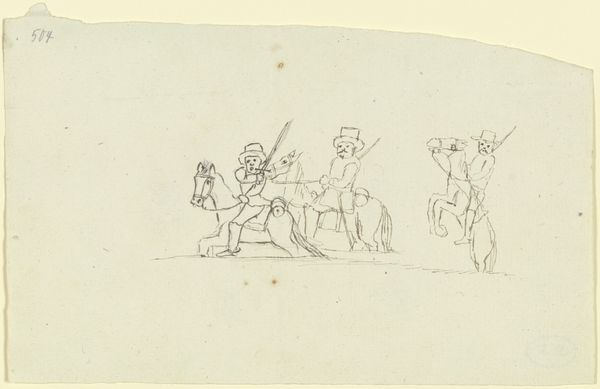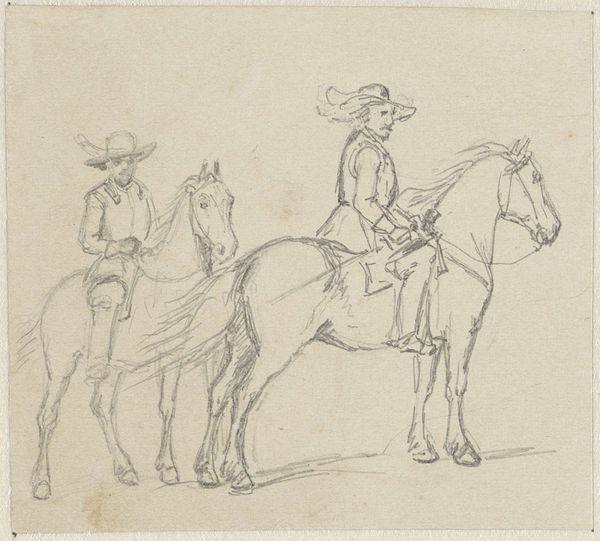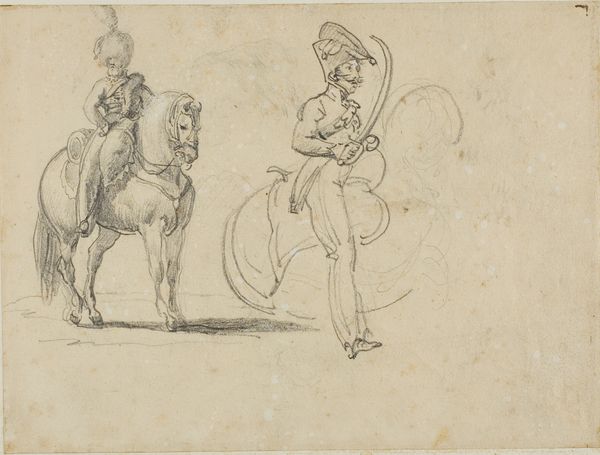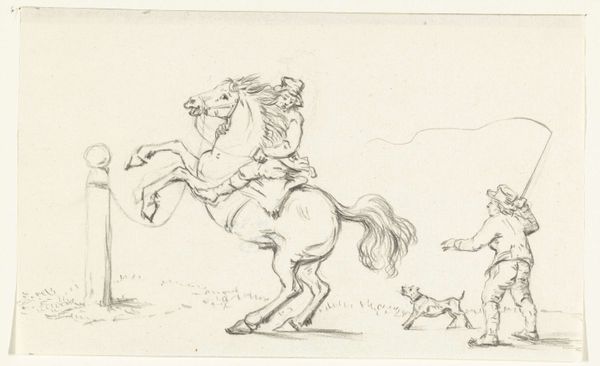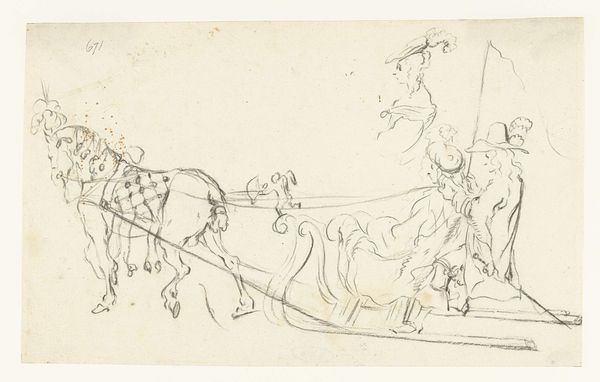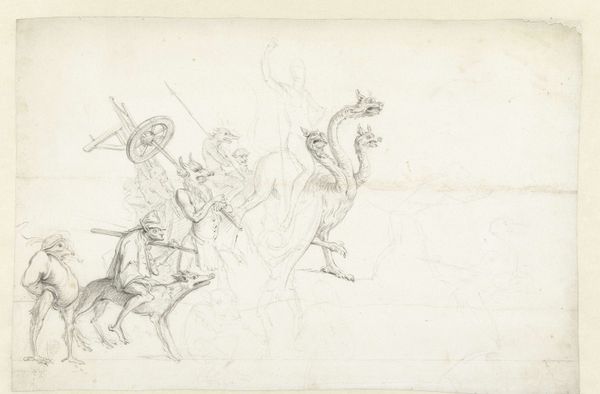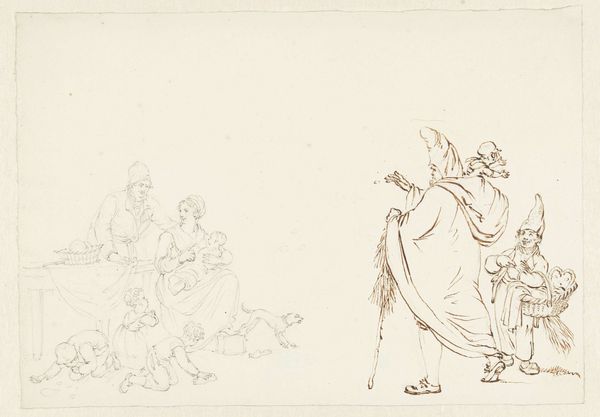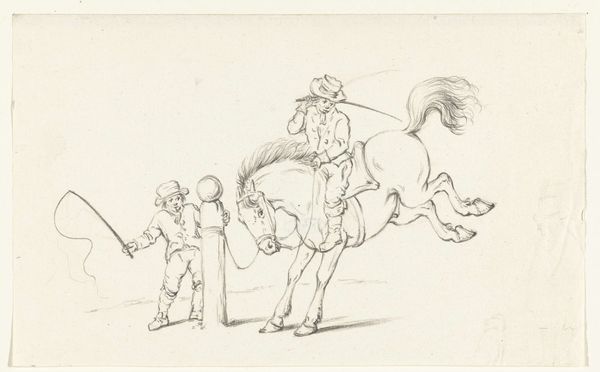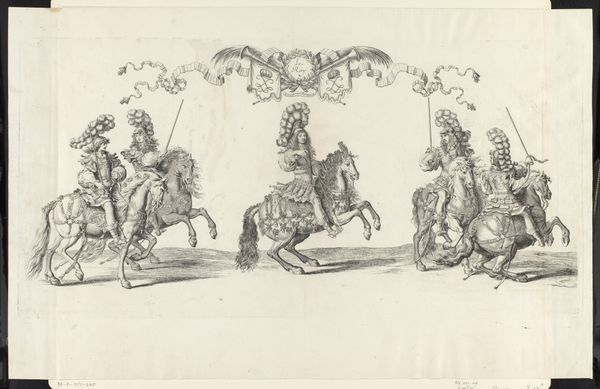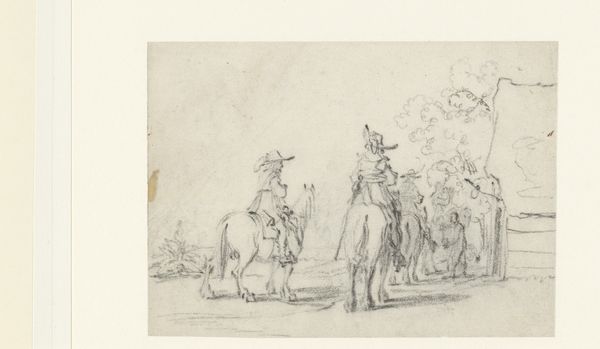
Boerin met kruik op het hoofd en een valkenier te paard 1820 - 1872
0:00
0:00
hendrikabrahamklinkhamer
Rijksmuseum
drawing, pencil
#
portrait
#
drawing
#
light pencil work
#
landscape
#
vase
#
figuration
#
personal sketchbook
#
idea generation sketch
#
sketchwork
#
ink drawing experimentation
#
romanticism
#
pen-ink sketch
#
pencil
#
horse
#
sketchbook drawing
#
genre-painting
#
storyboard and sketchbook work
#
sketchbook art
#
initial sketch
Dimensions: height 206 mm, width 268 mm
Copyright: Rijks Museum: Open Domain
Curator: This is "Boerin met kruik op het hoofd en een valkenier te paard" (Peasant woman with a jug on her head and a falconer on horseback), a pencil drawing by Hendrik Abraham Klinkhamer, made sometime between 1820 and 1872. Editor: The sketch feels almost ghostly. These lightly drawn figures barely exist on the page. Is it a finished work or a preliminary sketch? Curator: More likely a preliminary sketch, yes. Note how lightly Klinkhamer renders both the woman and the equestrian figures. She carries a large jug – a potent symbol of fertility and sustenance – while the falconer, usually associated with nobility, holds his bird aloft. Perhaps a commentary on social roles? Editor: I’m struck by how little ink the artist invests in defining these people. Was it a paper scarcity, perhaps impacting how artists approached draftsmanship at the time? Or might the sketch’s incompleteness reveal certain class-based assumptions about whose images warranted a full commitment of resources? Curator: Intriguing to think about, though I suspect it’s more about capturing a fleeting idea. The juxtaposition itself is what grabs my attention: a woman burdened, contrasted against figures on horseback in flight. Editor: But see how her garments and the horse’s tack are handled! Broad pencil strokes indicating mass produced goods, contrasted against a delicate precision evident in the falconer's garb that evokes older artisanal methods. Even the use of pencil creates its own symbolic register through mark making. Curator: Perhaps the lightness emphasizes ephemerality, the transience of rural life versus the more permanent status of the equestrian class... This kind of work is valuable for understanding how the symbols connected with these class differences were communicated through this medium at the time. Editor: Indeed. To view these as not simply depictions but evidence of the act of producing and as such tells a vivid tale. A beautiful reminder to look closer, not just at the images themselves, but at the means of their creation, and what it implies about production and power at the time.
Comments
No comments
Be the first to comment and join the conversation on the ultimate creative platform.
